The architectural landscape of Chicago is ever-evolving, with many structures meeting their end to make way for new, cutting-edge designs. While demolition is necessary for a thriving metropolis, it often comes at the cost of losing touch with the city’s historical roots and in some cases the demise of beloved landmarks in the name of pragmatism.
In our new series, “Lost Legends,” we aim to bring back to life some of the demolished Chicago landmarks that hold a significant place in the city’s architectural history. We will wind back the clock in the Chicago 3d model (see this version of the Timelapse in the enthusiast tier on rebarradar.com today) to show what each structure would have looked like the year before its demolition.Kicking off our series, we explore the former Chicago Federal Building, an architectural marvel that once graced The Loop. Designed by renowned architect Henry Ives Cobb and completed in 1905, the Beaux-Arts style building was a testament to the grandeur and ambition of early 20th century Chicago.
Location and Design
The Chicago Federal Building was situated on the block bordered by Dearborn, Adams, and Clark Streets, with its entrance facing Dearborn Street. Spanning a total area of 450,000 square feet, the colossal structure housed several federal agencies, including the U.S. Post Office and Courthouse.
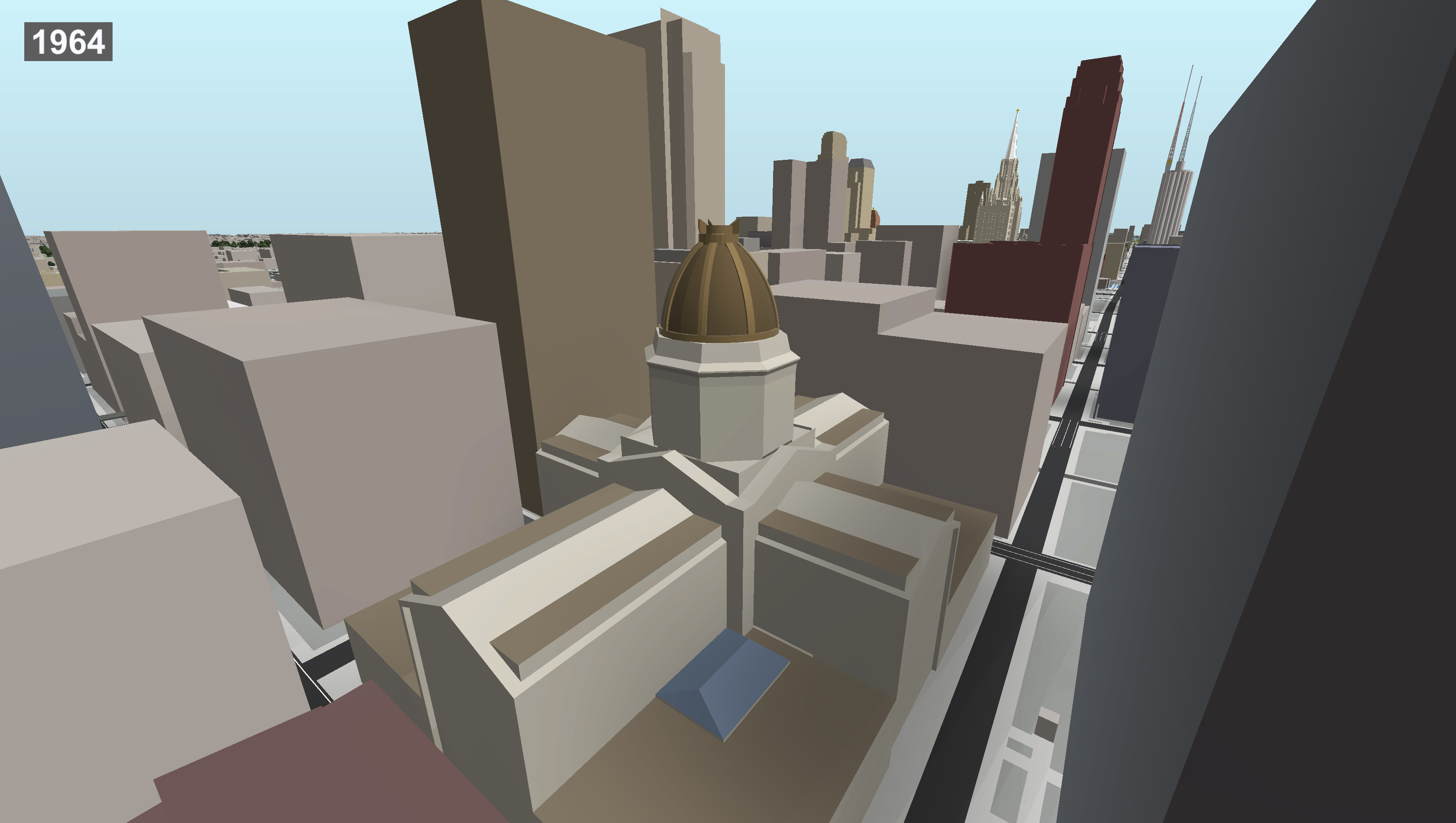
Chicago Federal Building (center) in 1964. Model by Jack Crawford / Rebar Radar
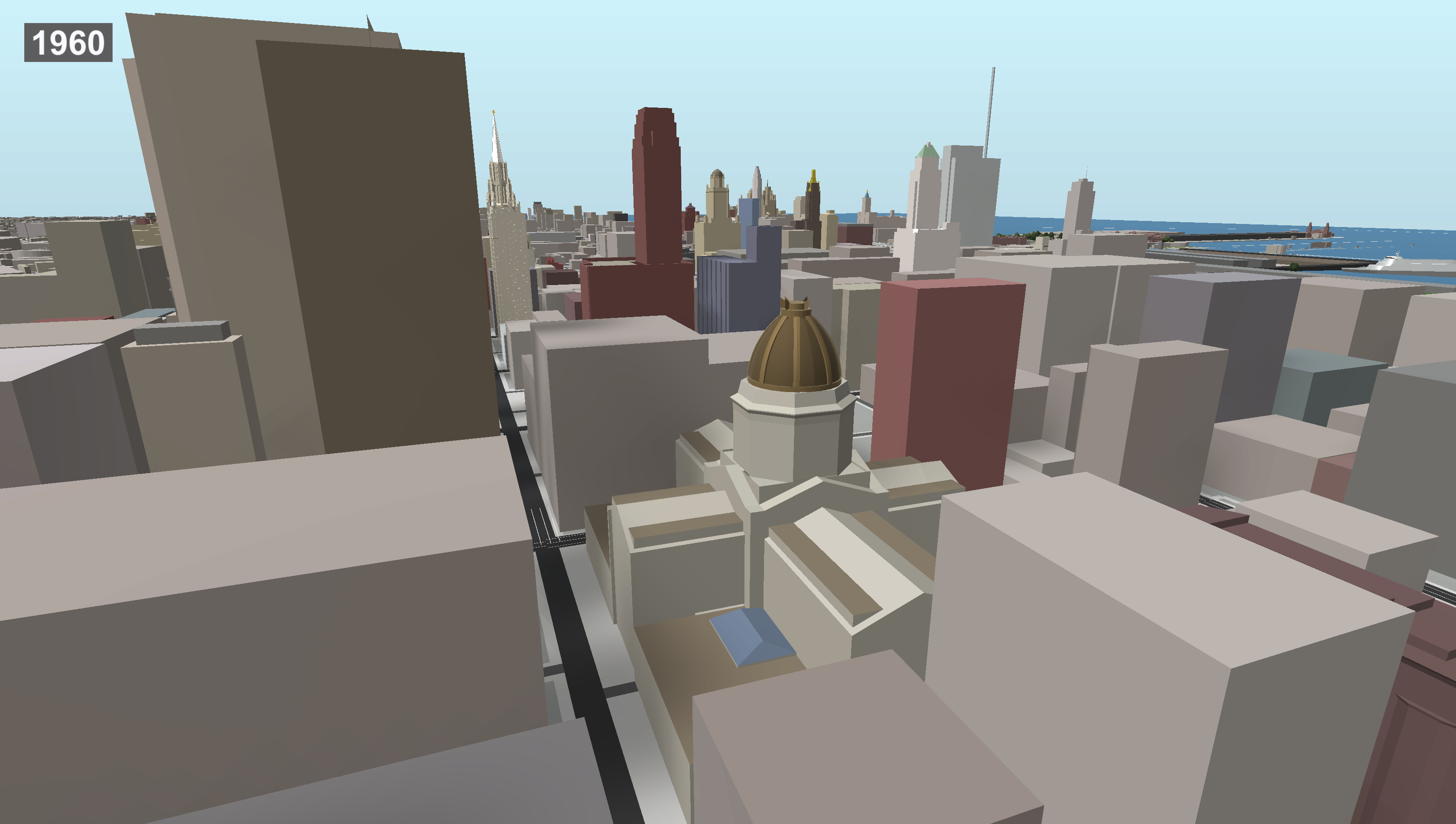
Chicago Federal Building (center) in 1964. Model by Jack Crawford / Rebar Radar
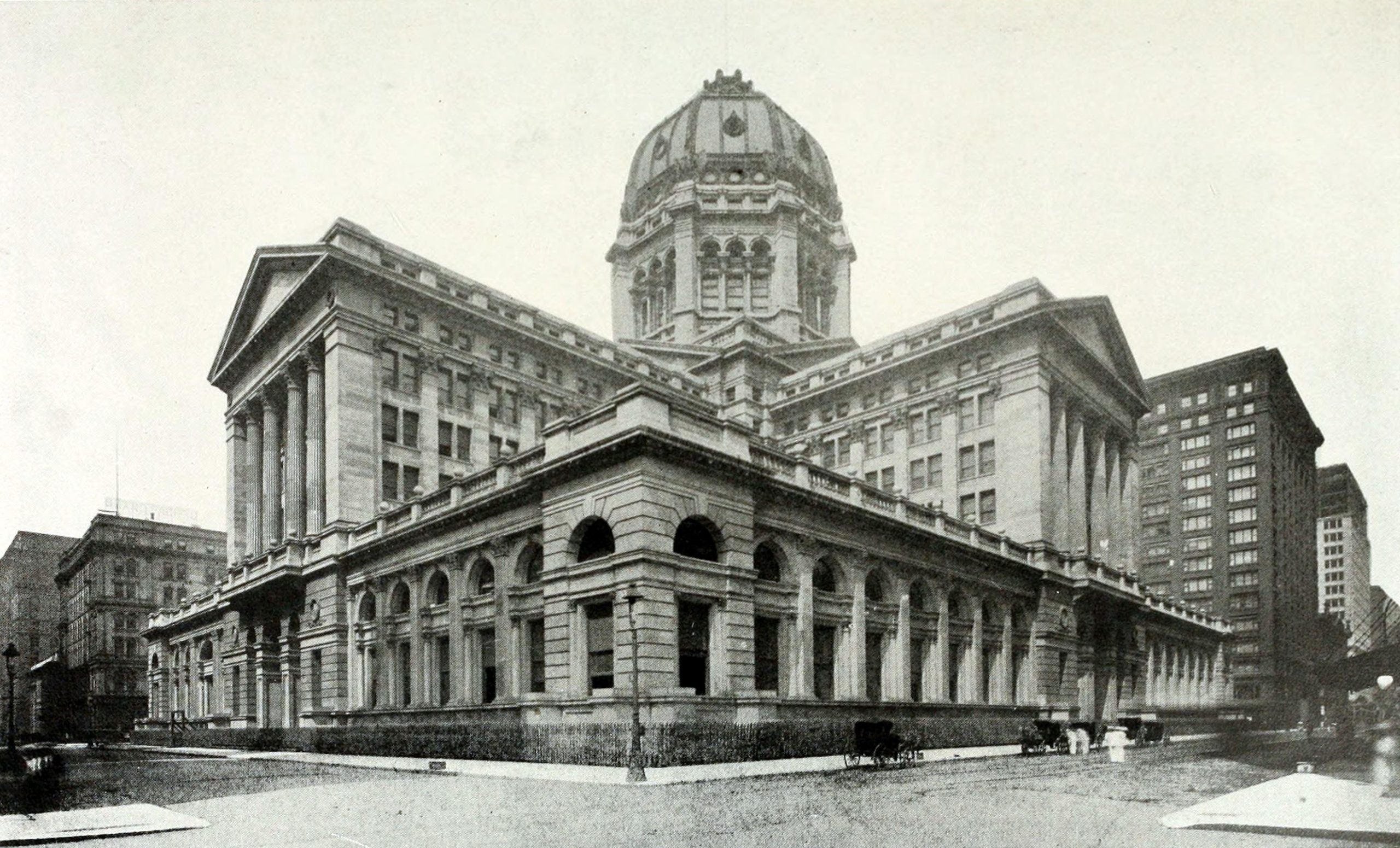
Chicago Federal Building in 1910. Photo by By FJC. – FJC http://www.fjc.gov/history/courthouses.nsf/lookup/IL-Chicago_1905_Ref.jpg/$file/IL-Chicago_1905_Ref.jpg, Public Domain, https://commons.wikimedia.org/w/index.php?curid=7795822
The building’s intricate façade featured a blend of granite and limestone, with ornate carvings and sculptures adorning its exterior. A massive central dome, inspired by St. Peter’s Basilica in Rome, crowned the building and served as its most distinctive feature. At the time, the 297-edifice was a significant landmark on the Chicago skyline, maintaining its grand presence as one of the city’s largest buildings up until its demolition.
Historical Significance
The Chicago Federal Building was a symbol of the city’s growth and development during the turn of the century. It was a bustling hub of civic activity, where citizens interacted with federal authorities and legal matters were settled. Additionally, several high-profile cases were heard within its walls, further cementing its place in the city’s history.
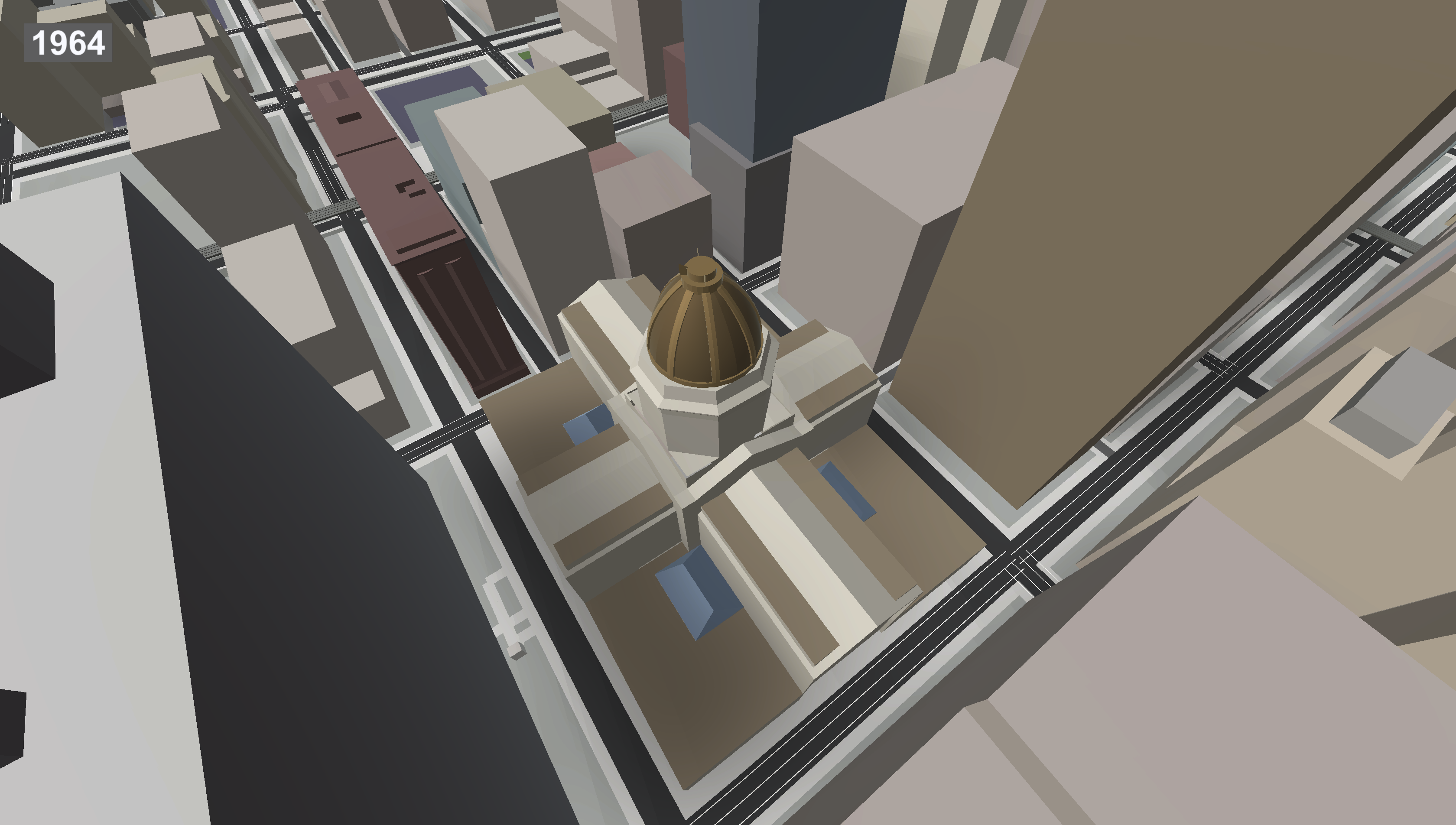
Chicago Federal Building (center) in 1964. Model by Jack Crawford / Rebar Radar
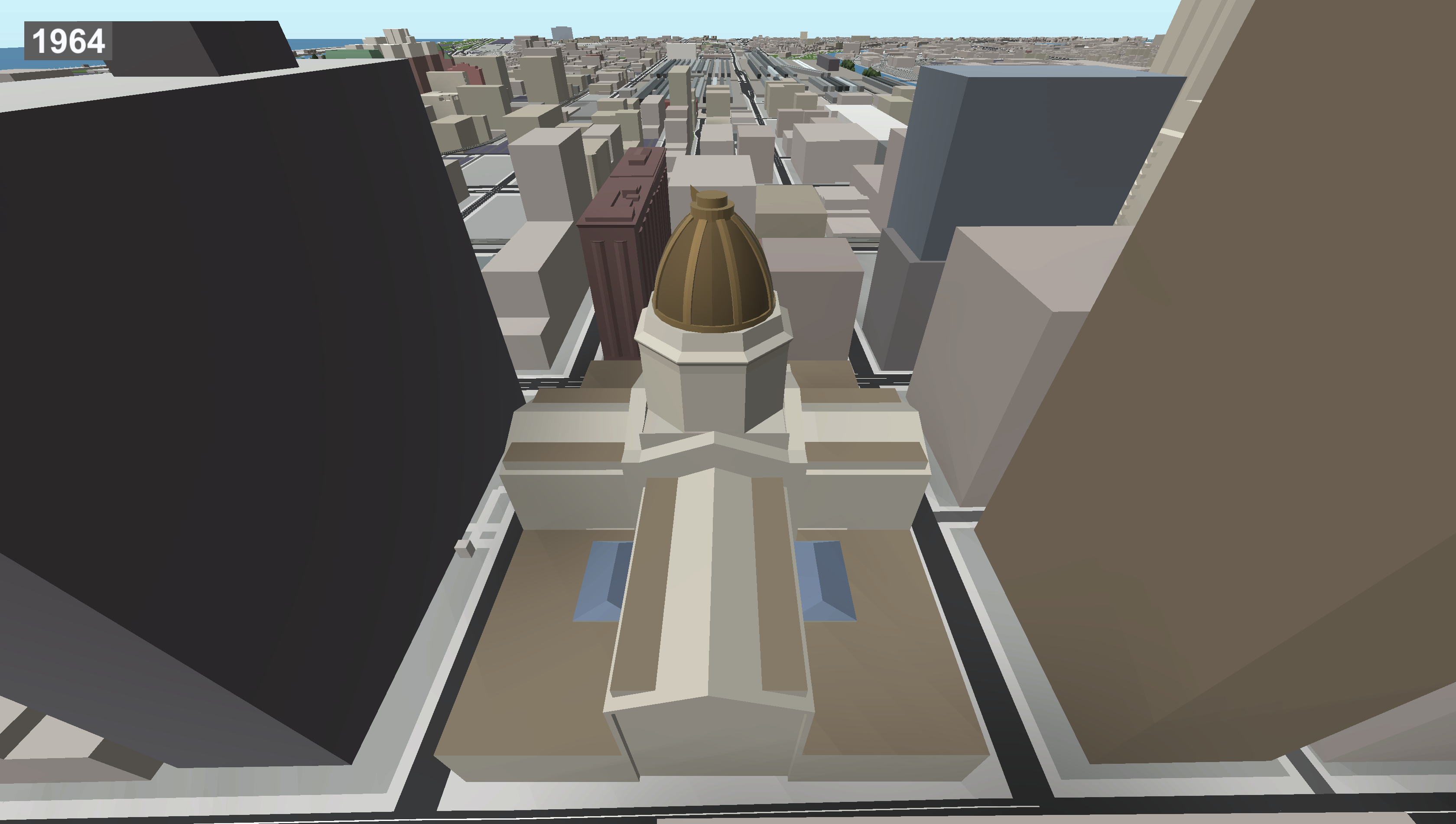
Chicago Federal Building (center) in 1964. Model by Jack Crawford / Rebar Radar
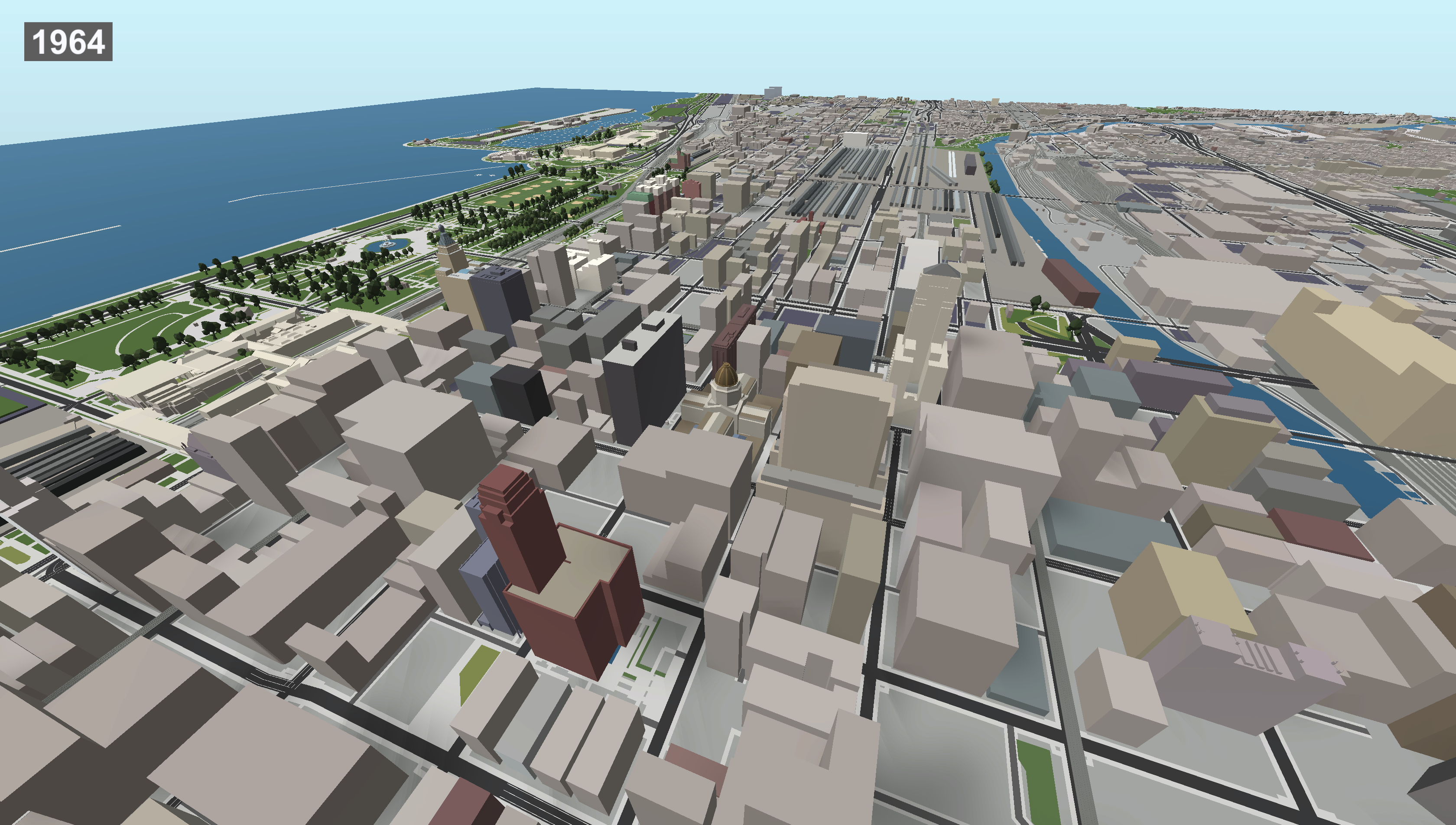
Chicago Federal Building (center) in 1964. Model by Jack Crawford / Rebar Radar
Sadly, the building’s inefficient layout and outdated facilities made it increasingly difficult to maintain. By the 1950s, it was deemed obsolete, and the federal government started considering its demolition.
Demolition and Legacy
Despite efforts from preservationists, the Chicago Federal Building was razed in 1965 to make way for the new 45-story, 562-foot Kluczynski Federal Building, Loop Station Post Office, and accompanying plaza. This remaining segment of the new Federal Center complex officially opened in 1974.
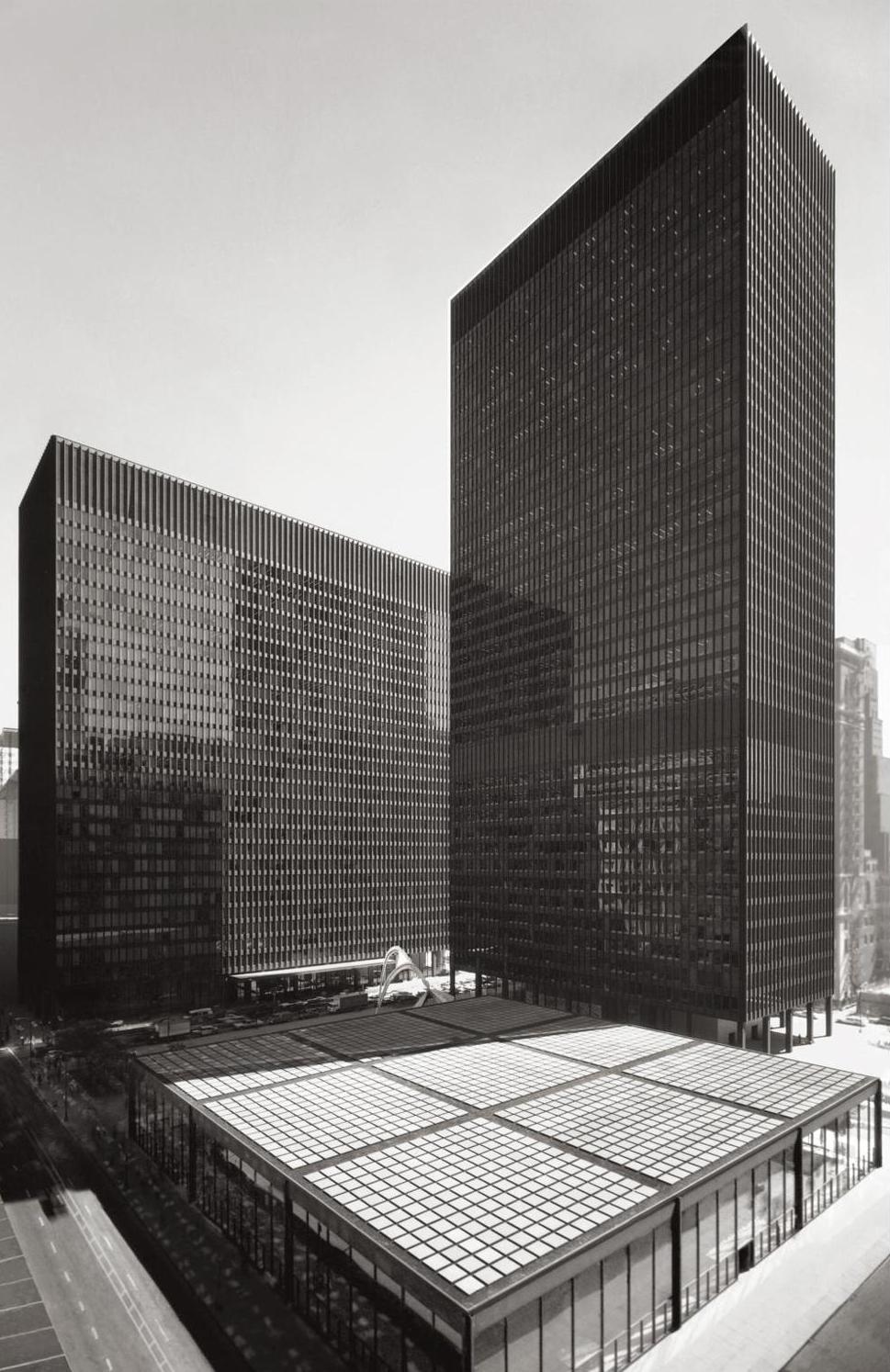
Kluczynski Federal Building. Image by US General Services Administration
While a major loss in its own right, the demolition of the Chicago Federal Building did have broader, positive repercussions for maintaining the city’s rich architectural history. In response to its demolition, concerned citizens, architects, and historians mobilized to establish preservation groups and advocate for stronger protective measures.
One notable outcome was the creation of the Chicago Architecture Foundation (now known as the Chicago Architecture Center) in 1966, which aimed to promote architectural appreciation and education. Additionally, the city of Chicago enacted the Chicago Landmark Ordinance in 1968, providing legal protection to historically and architecturally significant buildings.
Subscribe to YIMBY’s daily e-mail
Follow YIMBYgram for real-time photo updates
Like YIMBY on Facebook
Follow YIMBY’s Twitter for the latest in YIMBYnews

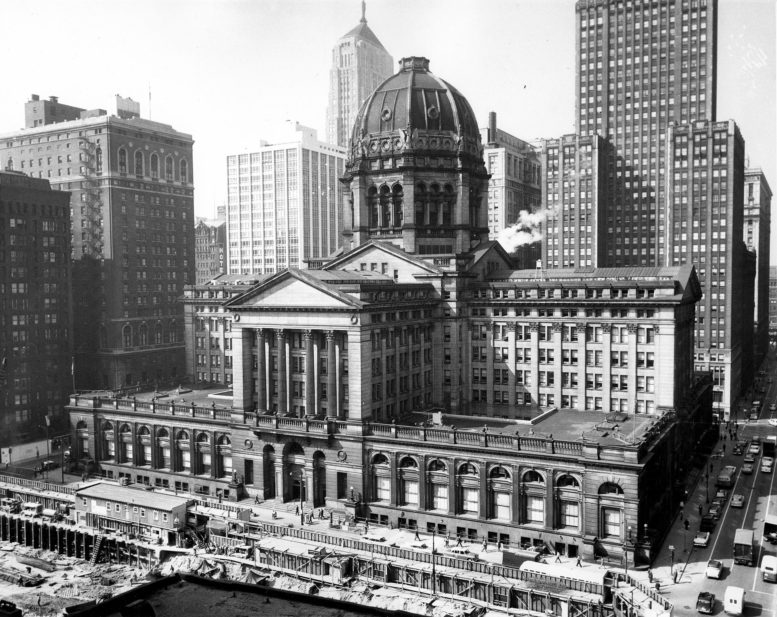
WOW. What a loss.
We are some stupid people!
Same as NYC: the loss of Penn Station and the possible loss of Grand Central Terminal inspired the Landmarks Commission and Law, which safeguarded numerous other structures.
I love the history. I never knew its demolition was such a catalyst for preservation advocacy in Chicago.
This also reminds me of how the federal government now wants to demolish the Century and Consumers Buildings. It really shouldn’t be allowed to happen. I believe Chicago residents are almost unanimously opposed. We can’t let history repeat itself at the whims of the out-of-touch federal government.
Andrew Porter
No,it isn’t the case,not even possibly as you pointed out there.Where do you get that from It only would have renovation its most adjacent surroundings,that’s all into it…
The Century and Consumers case is so frustrating. The government owns the buildings and is just letting them rot away in what has got to be a cynical ploy to make the justification for their demolition easier.
The whole deal with the century and consumers buildings is so stupid. IF they are worried about their security, they can just block up the windows on the back of the building which face the federal building, and cancel the rooftop space plans. With all the investment in converting the offices to apartments, you would think they would embrace repairing these buildings to provide this much needed housing. There’s just zero upsides to pointlessly demolishing these historical buildings which are potentially awaiting landmark status in the relatively near future.
I’m not sure why they need to worry about those buildings anymore. Do the judges even show up to work? Aren’t they still on Zoom in their pajamas working hard?…
One important legal note: Even if the City had tried to ‘preserve’ the building/site through location legislation, it wouldn’t have had any applicability to Federally owned property.
The Federal government and the property it owns is exempt from all state and local legislation due to the US Constitution’s supremacy clause.
This doesn’t prevent architecture lovers from lamenting a loss, but we shouldn’t let these feelings blind us.
Oooooo, that is a good point I did not think about.
Very good point and in some ways it softens the blow due to there being less that could have been done at a city level. I made a slight tweak to the phrasing at the end of the “Historical Significance” section to say “federal government” instead of “government”
Whenever an architectural treasure such as the former federal building is lost due to progress, at least some good occurs as a side benefit – the desire to preserve other buildings was born. The pictures let us remember what was taken for granted when i5 existed but also reminds us of the creative minds of various ages.
Just amazing that such an historical design was demolished. Good to know something positive came out of the loss but still too bad it is gone!
Could you please let me know why you’re rubbing this one in?
What an absolutely disgraceful move…..
HA, totally agree, this is rubbing our face in it.
Awesome series though Jack, excited/nervous to see what else pops up.
Aghh I know what you mean these kinds of articles always hurt to write/publish – I think it’s good though to get the word out to remind people to love our historical architecture in this great city
I kinda prefer what they replaced it with, historical associations aside, it looks kinda hideous
It was a nice building overall, but at least to me, something just looks off with its proportions. That being said, I really like the “new” federal building
Nothing lasts forever
Ashamed
So tragic that it was demolished! Can’t wait for more in this series
That old thing with it’s oversized domewas a hodge podge mess. Clumsy and misproportioned. The mies plaza trio we got instead is an absolute masterpiece of modernism. Not sad about this. This is in no way a Penn station MSG catastrophe.
Credit where due, the replacement was definitely one of the best modernist examples I’ve seen in any city
When I first saw this building as a child from many floors up from another building, I thought it looked ugly, filthy, bizzare, off kilter, and should be removed. It was indeed an unusual design and perhaps its exterior should be replicated in an new building in a smaller city which might have better use for such a structure.
Jack Crawford is one multi-talented man who apparently never sleeps. Kudos.
Is this the building where there is footage showing (on Clark street) Al Capone coming and going for his trial in the early 1930’s?
I worked in both the old federal building and the new.I just returned from lunch with a few co-workers when we learned about the death of JFK. I also watched each day while the old Fed building was demolished. Very sad
On the plus side, there are a few Henry Ives Cobb buildings extant in Chicago, from which you can get a better idea of his esthetic: Newberry Library, former Chicago Historical Society building (which many of us remember as the Slimelight nightclub), former Chicago Athletic Club (now a hotel), the building Harry Caray’s is in, and a couple more. IMO the demolition of the old Federal building was a tough call, as the lovely – if clunky – old building was functionally obsolete and the Feds needed more space for their Fedness. So you can argue back and forth about various aspects of the demo. But at least the Feds mitigated the loss with the sterling Mies ensemble of replacement buildings. One only hopes they last as long as the Cobb building.
I was in the old building and it was beautiful. Modern day buildings could not be built with that same quality of components and the wonderful architecture it would be cost prohibitive by today’s standards and economy. Destroying that was really a sin and should never be repeated. Just my humble opinion.